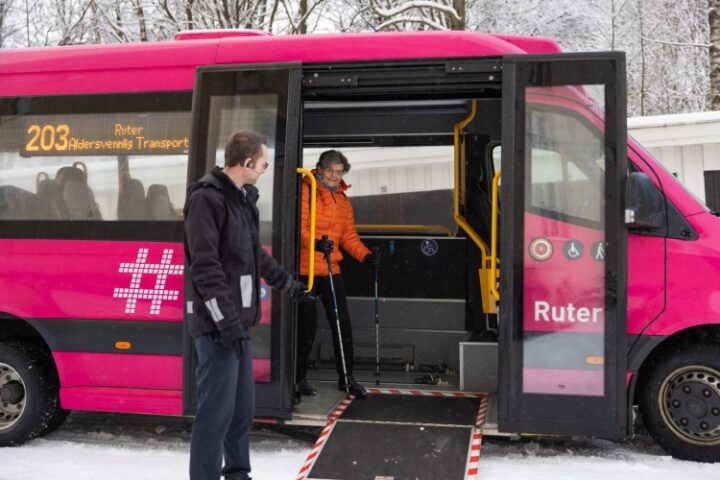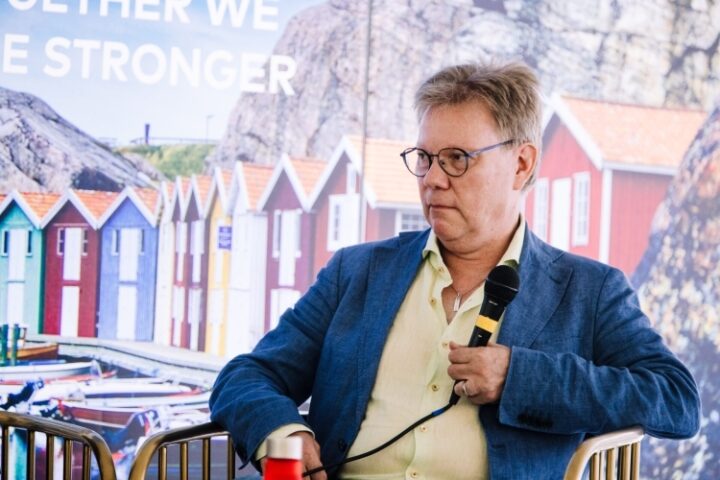Digital doctors and virtual surgeries: Swedish expert Bengt Andersson outlines the future of Nordic medicine

As the population both declines and ages and tax revenue decreases, drastic changes will have to be implemented in order for the standard of welfare for which the Nordic countries are famous to be preserved in sparsely populated areas. Swedish welfare services specialist Bengt Andersson looks at what that transformation will entail.
Countries all over the world are facing major changes in medical care and social welfare, and everyone seems to agree on one thing: digitalisation and technology are playing an increasingly important role in all types of welfare services. This is the way forward to minimise economic and social pressure on future generations.
Lifelines for Northern Swedish pensioners
Nordic Welfare Centre project manager and network coordinator Bengt Andersson says that coping with these new challenges requires a deeper understanding of what lies in store for us. “We also have to work out how to implement these processes in the best possible way, and what to expect from people in the field of technology in the future,” he says.
In the Nordic countries, around 1200 local governments will need to be capable of offering high-quality social welfare services. “Imagine you’re a pensioner in some tiny little village in Northern Sweden for whom going to the doctor’s means a trek of 10, 20, 30 km, and often just to do a blood test or have their blood pressure checked,” Andersson says. In such areas, transport links can be poor and medical care expensive, if it is even available.
“In remote corners like these, the problem could be solved with the likes of digital surgeries,” Andersson suggests. “These would allow patients to give blood and provide other samples, measure their blood pressure and undertake other straightforward medical procedures themselves, with virtual assistance if needed, somewhere close to their homes. The results and other details would be automatically added to a database the doctor can access and then advise the patient accordingly.”
These virtual surgeries would operate just like any other doctor’s surgery: patients would make an appointment, do the required tests, get to speak to the doctor and be prescribed whatever medications they need. Patients would also be provided with basic, easy-to-use medical supplies for use at home under the virtual guidance of a doctor or nurse.
“A digitalised process would reduce waiting times for treatment, make the service equally available everywhere, cut down on the journeys patients need to make and save everyone time and money,” Andersson predicts.
What is in the Nordic ‘toolbox’?
Soon a quarter of the Nordic population will be over 65. This is already the case in Sweden. Andersson says that while it is undoubtedly a good thing that people are living longer, some require more medical and social care than others. There are also those who remain fit and healthy well into their old age, but who may still require support of some kind.
“We were the first country in the Nordic region to start dealing with the fact that a steadily declining working population is having to, and will continue to have to, provide for an increasing number of people,” Andersson explains. “Demand for municipal care services is growing all the time. Looking at it from a number of angles, it’s a smart move for the region to be showing the way in how our communities can cope with demographic changes by utilising digital and remote solutions.”
Welfare technology is any technology that improves the lives of those who need it in one way or another. Such technology is used to ensure, and where possible boost, the level of safety, activity, participation and independence among the elderly and people with disabilities. Andersson says the Nordic Welfare Centre is involved in a number of welfare technology projects.
A ‘toolbox’ has been developed to facilitate the introduction of such projects in local governments in the Nordic countries.
Examples of welfare technology
– Technology to boost safety: security alarm systems, mobile phones, GPS-enabled mobile signalisation, video input systems and monitoring webcams
– Technology for active participation in social life: rollators, electric wheelchairs, visual and hearing devices, Internet services, video communication and technical support for reminders
– Technology for independent living: mobility aids, cognitive aids (such as reminders to take medication and remote controls for the television, lighting and automated systems) and ICT products and services that make shopping, banking and dealing with public agencies easier
– Technology to support family members and helpers: ICT services supporting communication with family members and welfare workers, lifting devices, auxiliary motors for manually operated wheelchairs and movement sensors
– Technology supporting everyday living: apps that help in day-to-day life (including those featuring pictograms to help people with weakened cognitive function to communicate) and aids for people with visual or hearing problems
Health care from a distance
The Nordic Welfare Centre conducted a survey to pinpoint good examples of digital solutions already being used by local governments.
The survey led to the publication of ‘Healthcare and care through distance spanning solutions’, which sets out 24 practical examples from the Nordic countries. All of these solutions have already been implemented and are available to residents – and more importantly, they have been shown to work.
These digital services are important to the people who use them because all 27 million residents of the Nordic region come into contact with them at some point, whether personally or via a family member or someone they know.
Introducing Iceland’s specialist doctor: Agnes!
Kirkjubæjarklaustur is a village of just 600 residents in the south of Iceland. The local hospital serves a large regional area, as well as the large number of tourists who visit the area every year. Doctors are difficult to recruit for the hospital, and short-term contracts have proven very expensive.
However, since 2013 the hospital in Kirkjubæjarklaustur has been using the online medicine programme AGNES. The doctor and nurse employed full-time at the hospital use the programme to consult patients, collect material for analysis and dispense medical assistance.
The hospital has special telemedicine equipment with digital HD cameras to check patients’ ears, eyes and throats. There is also a vital signs monitor, an ECG, a respiratory monitor, a dermatology camera and a digital stethoscope. These enable the nurse to monitor and diagnose patients, consulting the doctor where necessary. The programme has boosted the efficiency and availability of health care in the area and brought specialist medical care closer to rural residents.
The Finnish example: online cancer treatment
Patients suffering from cancer tend to have a lot of questions, but their doctors are not always available to answer them. In Finland, patients’ symptoms, how they are feeling and their quality of life are monitored digitally.
This enables the course of the disease to be closely observed and guarantees a prompt response should a patient’s condition deteriorate. It also allows doctors and nurses to advise patients on how best to look after their health. Seven universities and hospitals in Finland have adopted digital cancer treatment services, with 1200 patients using them in the city of Tampere alone.
Andersson views such services as the way of the future. “If all five Nordic countries started using services like these, we’d be on course to solve the looming problems in the health care and welfare sectors,” he says.
In cooperation with the news portal Geenius, the Norwegian embassy in Estonia and other Nordic embassies in the country, we launched a series of articles in which we shed light on the Nordic economies of the future and cooperation between Estonia and its Nordic neighbours. The articles can be found online at https://ari.geenius.ee/blogi/pohjamaade-tulevikumajanduse-blogi/.


